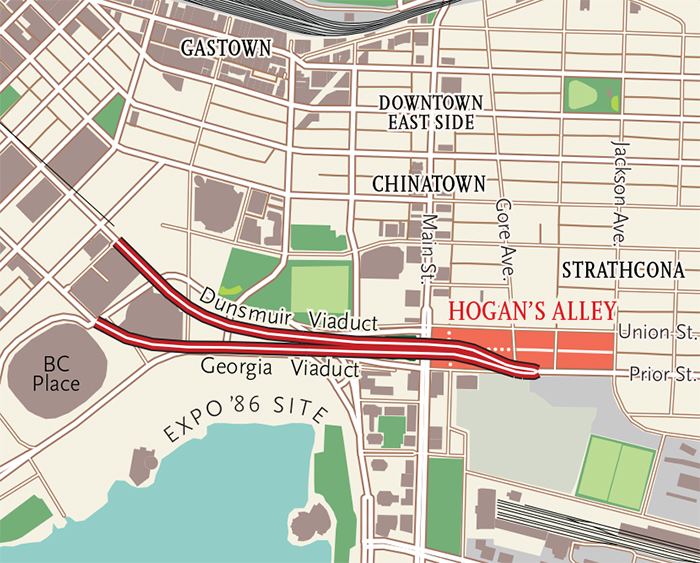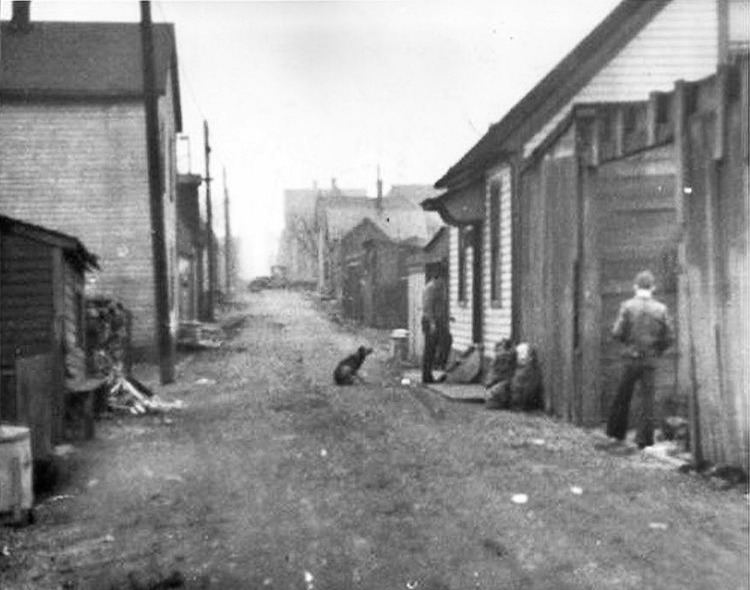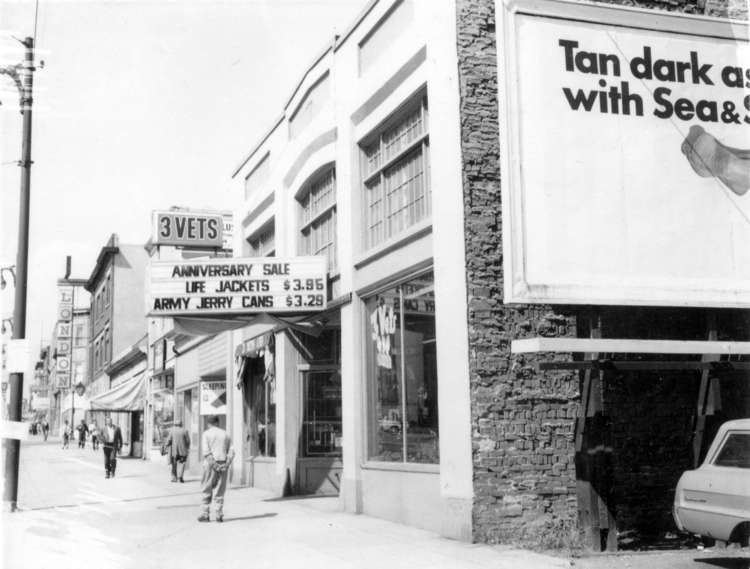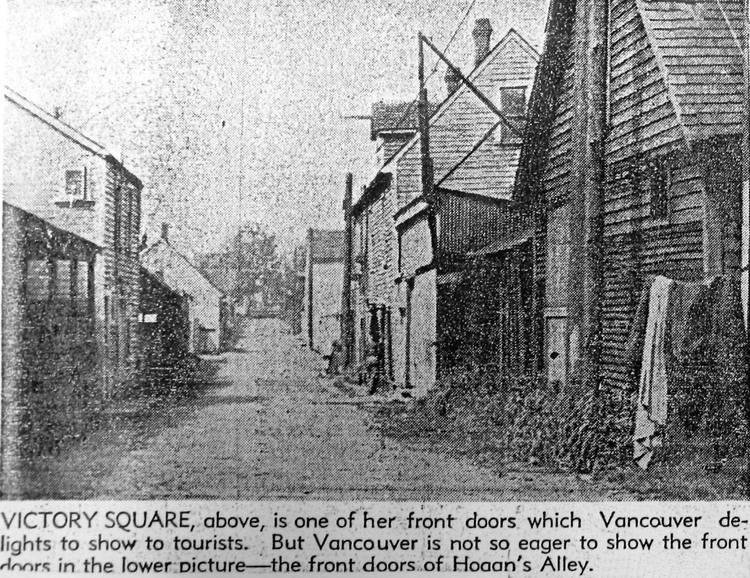 | ||
Hogan's Alley was the local, unofficial name for Park Lane, an alley that ran through the southwestern corner of Strathcona in Vancouver, British Columbia during the first six decades of the twentieth century. It ran between Union and Prior Streets from approximately Main Street to Jackson Avenue.

While Hogan's Alley and the surrounding area was an ethnically diverse neighbourhood during this era, home to many Italian, Chinese and Japanese Canadians, a number of black families, black businesses, and the city's only black church, the African Methodist Episcopal Fountain Chapel, were located there. As such, Hogan's Alley was the first and last neighbourhood in Vancouver with a substantial concentrated black population. A possible reason these families settled there was because of the close proximity to the train stations since sleeping car porters were predominantly black men. A 1957 study by the City of Vancouver Planning Department described the black population of Strathcona as such: "The Negro population, while numerically small, is probably a large proportion of the total Negro population in Vancouver. Their choice of this area is partly its proximity to the railroads where many of them are employed, partly its cheapness and partly the fact that it is traditionally the home of many non-white groups."

Prior to 1935, Hogan's Alley was a red light district, owing to Mayor L. D. Taylor's "open town policy," which was that police resources would be concentrated on major crimes, not victimless vice crimes. As a result of this policy, illegal drinking establishments, brothels, and gambling dens operated here, as they did in various other non-white sections of town like Chinatown and Japantown, but also in non-ethnically defined areas nearby such as Gastown, East Hastings and lower Mount Pleasant. This policy also earned Taylor a reputation for being soft on vice crime and he faced accusations of corruption. This was the basis of his electoral defeats in 1929 and 1934. Hogan's Alley long outlived Taylor's career in civic politics until it faced demolition to make way for a freeway.

Most of Hogan's Alley was destroyed circa 1970 by the Non-Partisan Association civic government's construction of the Georgia Viaduct, the first phase of a planned interurban freeway originally through Hogan's Alley and much of Chinatown and Gastown. The freeway was stopped by an alliance of Strathcona community activists and Chinatown businesspeople. The freeway was blocked, and Strathcona, Chinatown and Gastown were saved from the wrecker's ball, but not before Hogan's Alley was mostly demolished. Today, the block or so that is left of the alley itself bears little to no mark that there was ever a black presence there, and is an indistinct part of Strathcona facing an empty lot adjacent to the busy Main Street on-ramps to the viaduct.

One remaining landmark that suggests a black community was active in the Strathcona neighbourhood during the first six decades of the twentieth century is the Jimi Hendrix Shrine. The shrine, located on the corner of Union and Main, was created to celebrate the connection between Hendrix and Vancouver. Nora Hendrix, born in Knoxville, Tennessee and grandmother to the late musician, migrated to Vancouver in 1911 and lived in and around Hogan's Alley.

The alley was recreated in virtual form in the 2014 interactive work Circa 1948.

